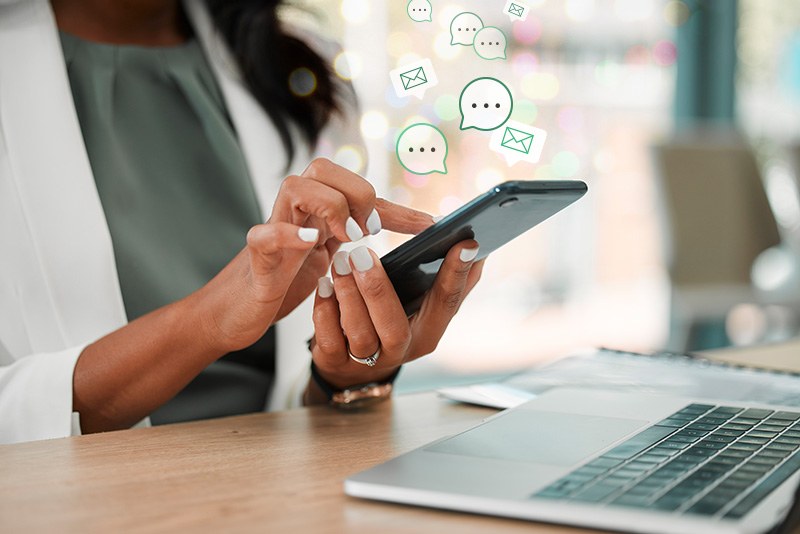Posted: February 15, 2024
The rules of netiquette change for communication when you text, post, or email as a professional. Ensure your written messages have a professional tone that demonstrates an awareness of proper and polite digital communication.

Browsing cellphone messages and emails at the workplace.
What is netiquette?
Netiquette encompasses the skills, protocols, and norms for communicating via digital platforms (e.g., email, text message, messaging apps, and social media). Using netiquette can help people form a positive impression of you.
Why does it matter?
As an educator, you are a professional who conducts yourself with integrity, accountability, and excellence. Netiquette allows you to highlight those qualities by ensuring that your written messages have a professional tone that demonstrates an awareness of proper and polite digital communication rules.
What is the netiquette for texts and posts?
Written communication in brief messages like texts or posts has become a common way to connect and is helpful for short exchanges. Texting and posting are informal, allowing for live one-to-one conversations through a device or app that often involves abbreviations, slang, and emojis to help quickly create context and meaning.
If you find yourself texting or posting as a workplace communication strategy, here are some things to keep in mind:
- Know your recipient. Texting or posting a message that says, "? coverage EOD" might be a message you could send to a co-teacher as a close associate; however, "Can you please tell me who is covering end-of-day?" has a much more professional tone.
- Choose words and terms that communicate your message effectively and appropriately. Using symbols, abbreviations, and codes to represent ideas, thoughts, and feelings can lead to confusion and misinterpretation. Sarcasm can do the same.
- Avoid texting in all caps. It communicates yelling and is considered rude.
- Save complex ideas for email or face-to-face conversations.
- Be patient. A response may not be immediate. Texting "???" or "HELLO?" can undermine the professional image you are working to create. If you feel too much time has passed and you need to follow up, writing "Just checking in to make sure you saw my message" is a friendlier, more professional prompt for a response.
- Remember there is a human on the other end of the conversation. Ask for clarification before making assumptions or reacting. Know that what you text and post can be difficult to retract later.
What is the netiquette for email?
Email is a more formal type of digital communication. It requires attention to elements of form that indicate the writer’s understanding of their audience and purpose.
When writing a professional email, here are some essential elements to include:
- Include a clear, brief, and specific subject line that indicates the essence of the message. For example, a subject line like "Art supplies needed" allows the recipient to anticipate the content of the message and helps them find your message using search options more efficiently later.
- Open with a salutation. A proper greeting ranging in formality based on your level of familiarity, like "Dear Ms. Smith," "Hi Lamar," or even just a simple "Hello," demonstrates respect for the reader.
- Introduce yourself when reaching out to someone new. Be authentic and genuine.
- Be brief. Avoid unnecessary information and words.
- An email is NOT a text message. Avoid texting abbreviations (e.g., LOL, IMO, SMH, IDK). Professionalism calls for correctly spelled words and well-put-together, complete sentences.
- Make reading your email accessible by dividing the body of the message. A good email should get to the point, share relevant information, and conclude in three paragraphs.
- Close with a signature that contains your name, organizational role, and business contact information.
- Reread, revise, and review before sending. Look for grammar and spelling mistakes that may make understanding your email difficult or misconstrue your tone or intended meaning. Also, check to ensure any embedded links are working and any attached documents you’ve indicated are present.
Look at a sample email to see netiquette in practice.
Summary
Texting, posting, and emailing are everyday tasks that are part of an educator’s role. How you conduct yourself using these tools can influence other’s impressions of you and your level of professionalism, which can impact your ability to self-advocate and advance your career.

